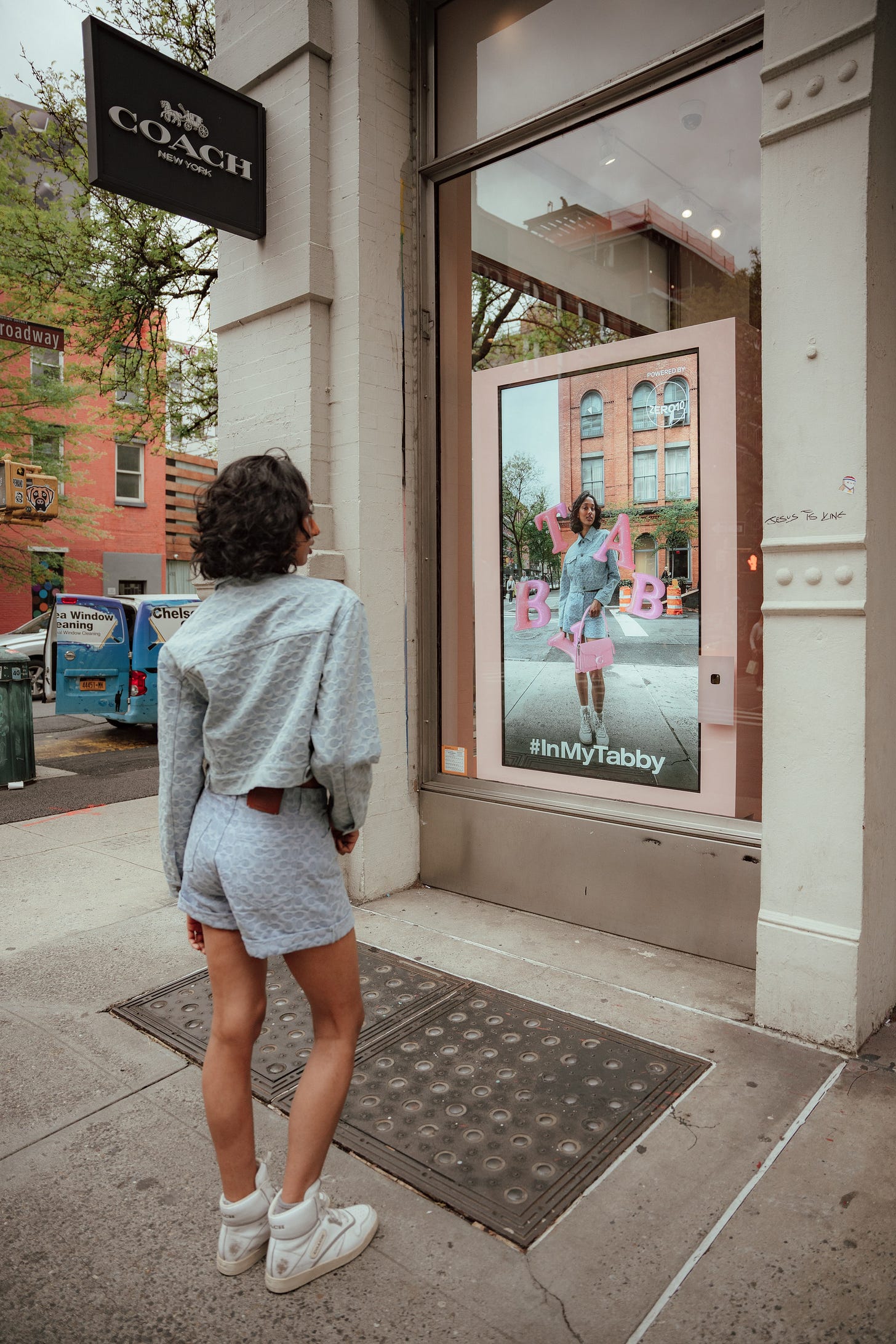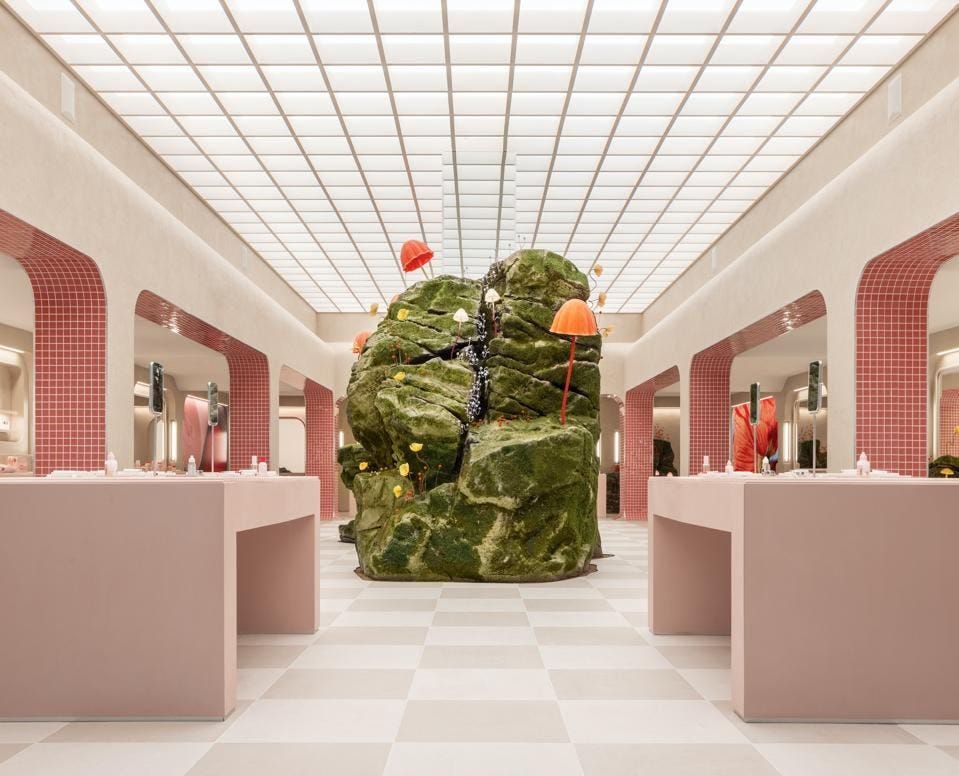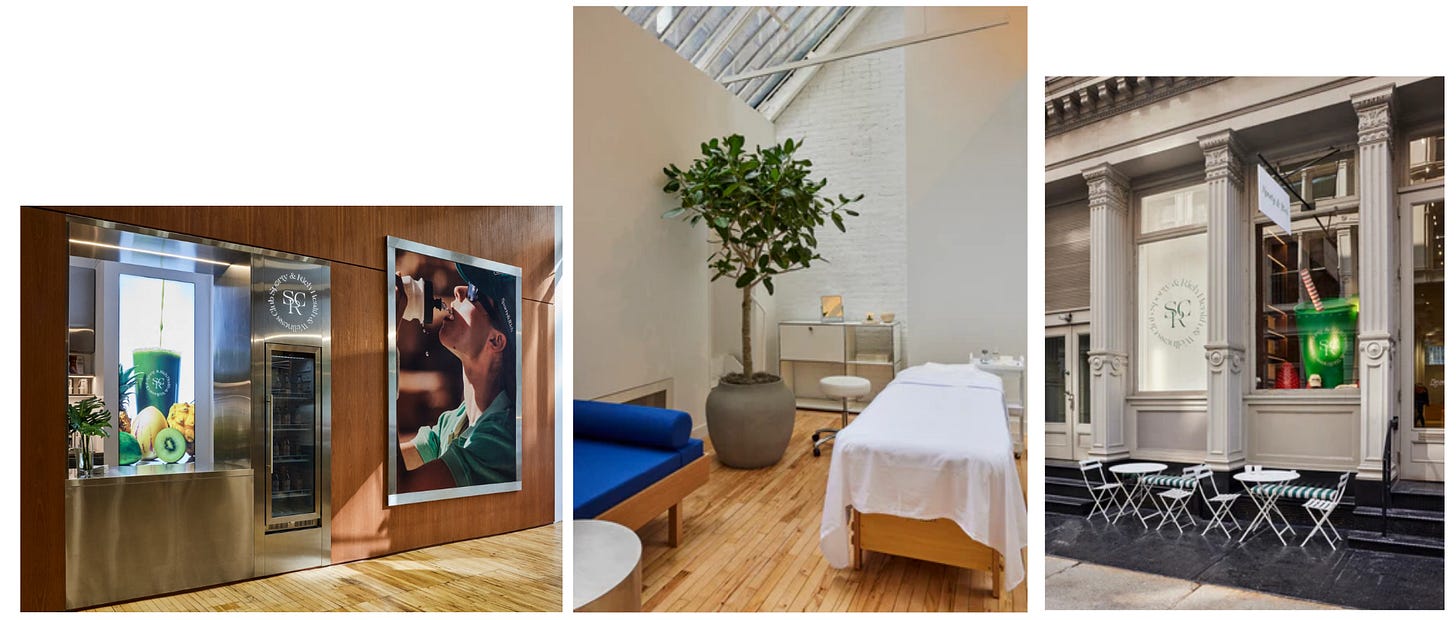“Retail is dead”
Retail as a focused point of sale is dead. Retail as a brand experience is the future.
KITH’S recent flagship opening is a case study on how the sexy, forward-thinking brands are approaching retail.
Why are hot brands opening stores?
Because they know physical retail shouldn’t be viewed solely as a primary POS or exclusive cash flow source. Instead, they reimagine them as environments for experiences and emotional engagement.
They’re experimenting with them more as showrooms or exhibitions rather than traditional transactional locations.
Beyond expanding brand worlds, if we put our finger on the cultural pulse, there are signals of demand for these physical spaces.
The first is the disintegration of third spaces. The demand for spaces outside work and home for people to connect is loud. And while capitalism solving the third spaces conundrum is my least favourite reality, it’s a reality nonetheless. Third spaces are a real need for most communities, and ~thus an opportunity for brands to show up meaningfully.
The second is the demand for phygital experiences. Especially for Gen Z. We see this URL to IRL pipeline play out in real-time with their affinity for Sephora. Kids aren’t playing outside. They’re playing online. And they’re playing in Sephora.
Even though Gen Alpha has been scrolling since before their temporal lobe was fully developed, they still love brick and mortar. Brands are updating their sales channels, with nearly 60% saying they’ve increased their retail partners in the last year. Future-proofed brands know how to connect digital and physical experiences for the iPad babies seamlessly. It’s no good just throwing digital at an experience and hoping for results - it must serve a purpose and elevate the brand narrative.

Brands with their pulse on culture see this opportunity. It’s why Sporty and Rich has a flagship with more amenities (a juice bar, facials and on-site massages) than actual clothes. Or why Louboutin is investing in hotels. Or why lineups wrap around the Supreme and ALD stores, from New York to Seoul. Or why despite the last few years of declining relevance in the beauty space, the wonderland of Glossier stores remains an attraction in major cities.
They know how to take the consumer beyond the traditional realms of retail and make them feel part of something bigger.

Culturally relevant brands understand their communities intimately and create honest cultural interventions.
Retail experiences need to feel unmissable and make bold, brave statements with their experiences. They need to create experiences that align with the brand’s existing values - but expand its identity and narrative in a way that feels culturally relevant, right now.

The future of retail looks like:
Delivery of instant, long-lasting and shareable visual impact
A community-first approach that creates a sense of belonging for customers
A seamless physical-digital integration that covers every touchpoint
With a strong cultural and consumer understanding (and a little creativity), businesses of all sizes can tap into the future-proofing potential of retail. They don’t need to have a Lafayette flagship, they just need to know where their business offering intersects and connects with culture.





Love your brain. For me, this shift signifies a deeper evolution of brandwashed identities. Traditionally, third places provided a central space for diverse community members to gather. In contrast, branded third spaces tend to attract specific personas and segments. While I appreciate innovative and inviting retail spaces, I also hope these brands explore models that foster community beyond commodity